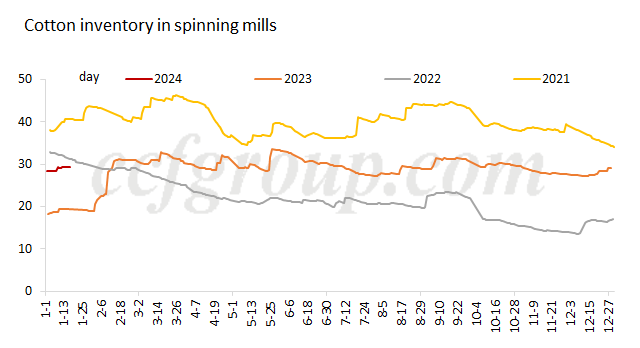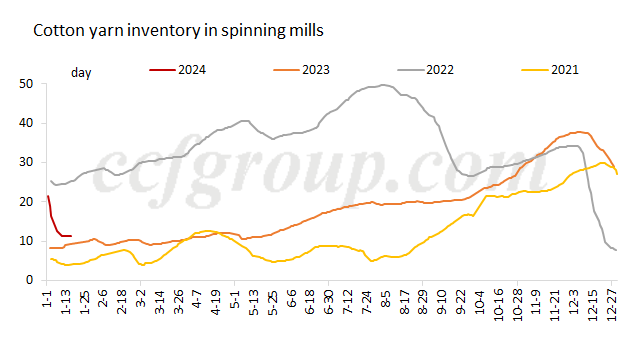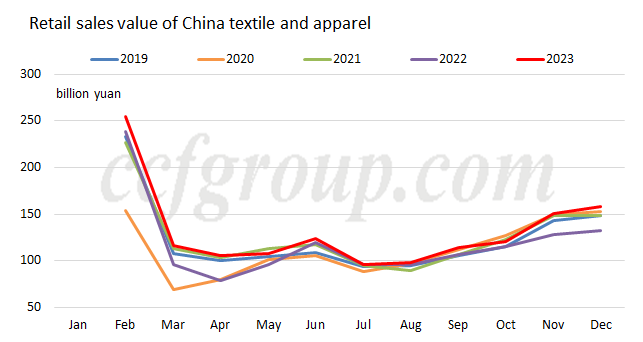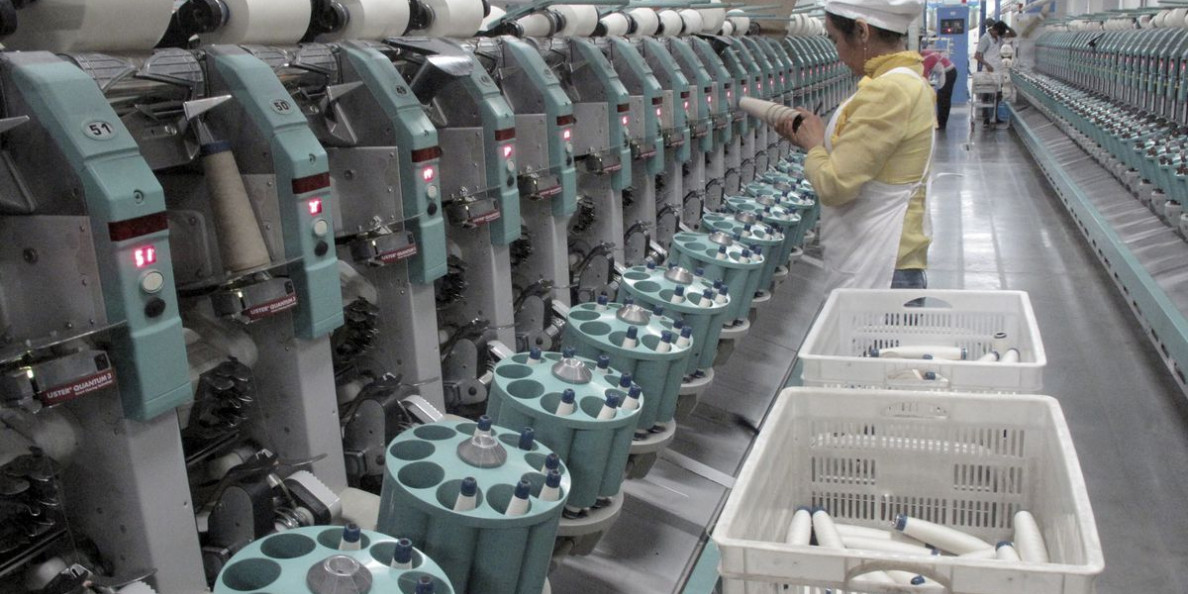Since the beginning of December 2023, the ZCE cotton futures have continued to rise, with the major contract from a low of 14,740yuan/mt to a high of 15,860yuan/mt in the morning of January 18, an increase of over 1,000yuan/mt. From a fundamental perspective, the continuous price increase during this period is mainly driven by good demand from downstream sectors. After cotton prices are at a low valuation level at the end of November, the downstream textile industry experiences a rapid depletion of cotton yarn inventory due to pre-holiday replenishment demand, pressing demand, and delayed demand from October and November. This phenomenon eliminates the concerns about cotton yarn trader inventory, and the entire industry chain returns to smooth operation. Strong downstream demand supports the upward trend of cotton prices.


From the performance of downstream textile mills, cotton yarn inventory has rapidly reduced since early December and has reached a relatively low level. However, the cotton yarn sales have slowed down recently due to the approaching Spring Festival. Nevertheless, the basic situation of small inventory pressure in spinning mills and no significant inventory pressure for cotton yarn traders has been established. Therefore, textile mills still have a demand for purchasing cotton at favorable prices after the rapid reduction of cotton yarn inventory. The order situation for textile factories continues to be better than expected, with some large-scale textile enterprises receiving orders until February or March, while smaller ones have relatively poor order situations. Overall, home textile orders remain strong. Considering recent booming tourism in Harbin, residents' willingness to travel remains strong compared to the period of the pandemic.

From retail data at the end-market, Chinese domestic sales demand in 2023 is also satisfactory, especially in November and December when the year-on-year growth rate of clothing retail continued to expand, reaching 11% for the whole year.
Overall, as long as downstream demand does not weaken significantly, the driving force for cotton price upward movement will continue to exist. However, the performance of downstream end-market demand needs to be verified after the Spring Festival. If end-market demand is weaker, the inventory pressure for cotton yarn traders may reappear, putting pressure on cotton prices. Conversely, if end-market demand remains strong and the hedging pressure gradually recedes, there will be a stronger driving force for cotton prices to rise.
Πηγή: ccfgroup.com

